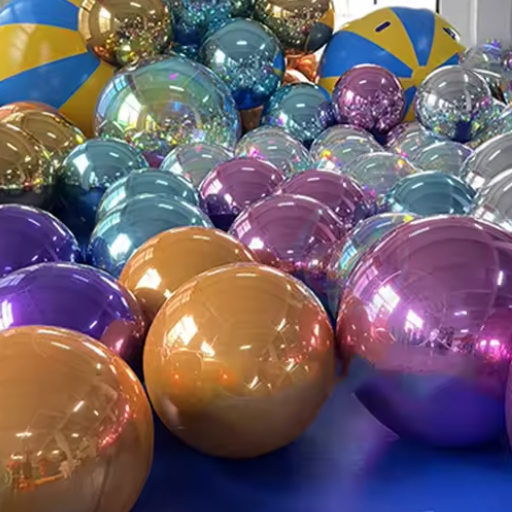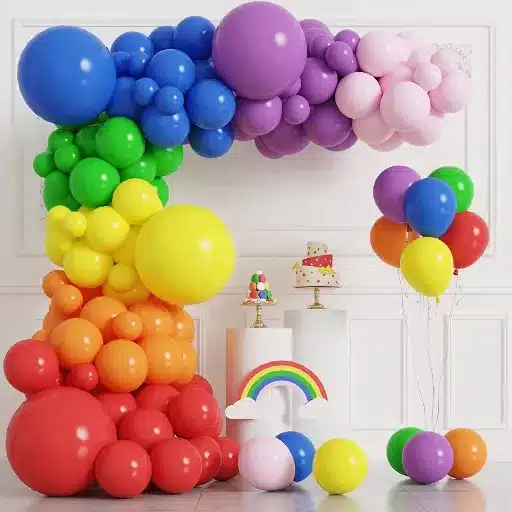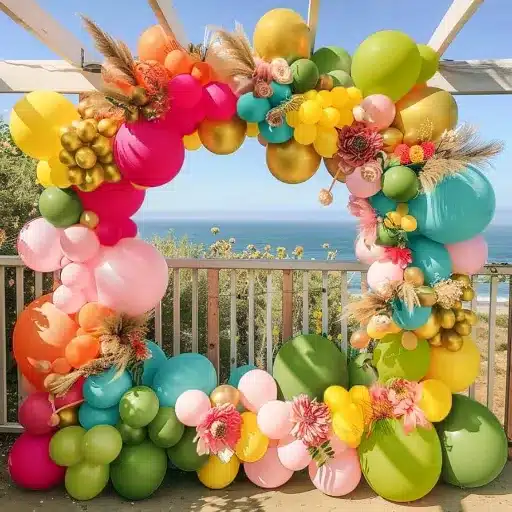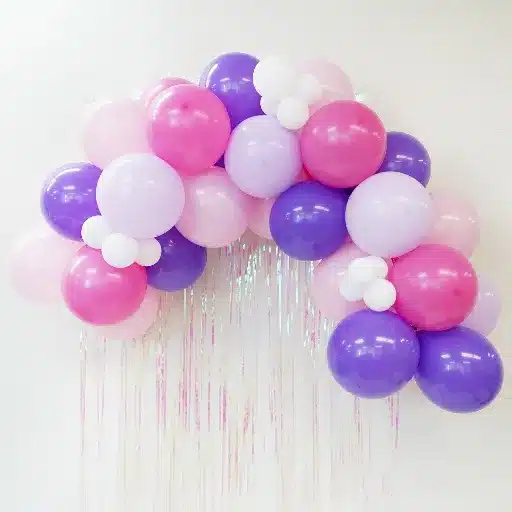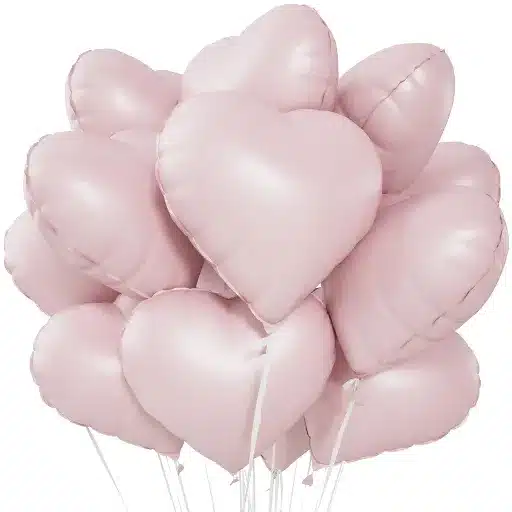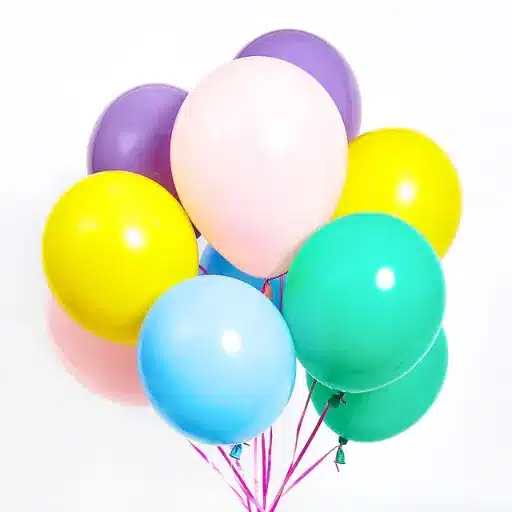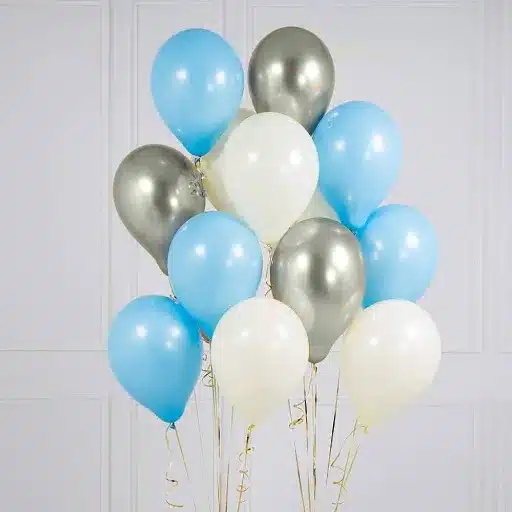This comprehensive guide takes into consideration the factors affecting their longevity, how to keep them inflated, and their practical uses. Whether this is a birthday, wedding, or any other special occasion, learning ways to keep your foil balloons from deflating will ensure they stay vibrant and eye-catching for as long as possible.
Lifespan of Foil Balloons
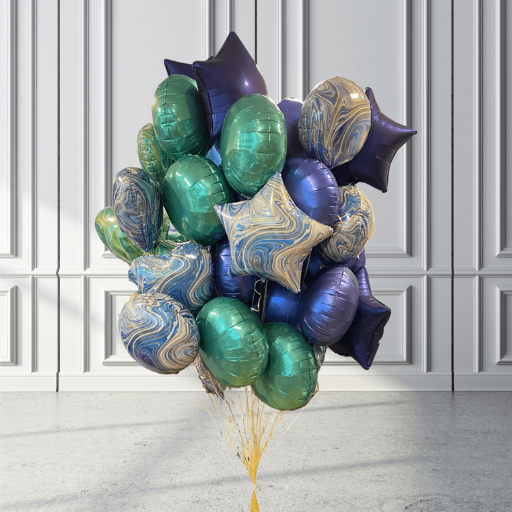
To maximize balloon lifetime, avoid subjecting these balloons to extreme temperatures or abrasive surfaces, and store them in a cool, dry environment.
Average Duration of Air-Filled Foil Balloons
A correctly inflated and sealed foil balloon stored in optimal conditions may last anything from 6 weeks to several months.
Comparison with Helium-Filled Balloons
| Parameter | Air-Filled Foil Balloons | Helium-Filled Balloons |
|---|---|---|
| Floating Ability | Do not float | Float due to helium gas |
| Lifespan | Lasts weeks to months | Lasts hours to days |
| Cost | Budget-friendly | More expensive due to helium |
| Environmental Impact | Eco-friendlier, no helium required | Helium is non-renewable, potential litter |
| Usage | Ideal for arches, garlands, sculptures | Best for floating displays, bouquets |
| Refillability | Not refillable | Refillable (foil balloons only) |
| Durability | Highly durable | Shorter lifespan, helium escapes faster |
| Visual Appeal | Stationary designs, versatile | Floating, dynamic, eye-catching |
| Setup | Requires support structures | Requires weights or ribbons |
| Best For | Long-term, budget-conscious events | Short-term, visually striking events |
Factors Affecting Lifespan of Foil Balloons
Several key factors determine the longevity of foil balloons, filled either with air or helium. Here are five primary points to keep in mind:
1. Sealing
The better the sealing, the less likely it is that air or helium will escape. Poor sealing drastically shortens suspension time, whereas well-sealed balloons remain inflated for longer periods.
2. Temperature Variations
Extreme temperatures can have a detrimental effect on the gas inside the balloon. Heat expands helium or air, which can cause the balloon to leak; cold temperatures, on the other hand, contract the gas, making the balloon appear deflated.
3. Sunlight Exposure
Direct exposure of a balloon to the sun and UV rays weakens it over time, speeding up its deflation, or the foil could rupture.
4. Environmental Conditions
High humidity or rough environment degrades the foil and the sealing adhesive. A stable dry environment is needed for prolonged balloon life.
5. Balloon Material Quality
The quality and strength of the foil material matter. High-quality balloons made with thicker, stronger-to-puncture foil typically outlast lower-quality variants.
Factors Influencing Durability
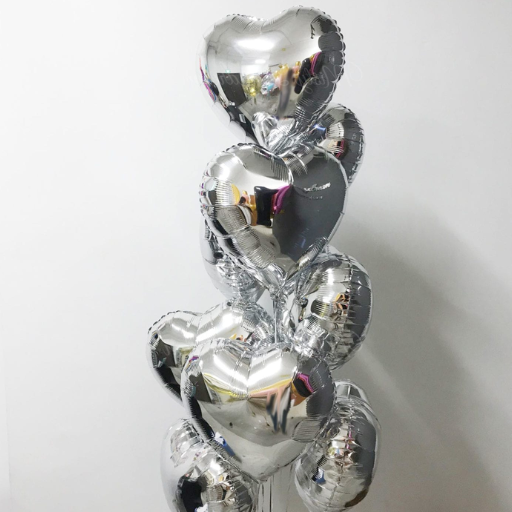
Proper Inflation
Pressure and proper inflation are essential for the lifetime. Over-inflating can stress the material, making it prone to tearing, while under-inflating can reduce lifespan. Follow the manufacturer’s instructions for the balloon.
Storage Conditions
Store away from adverse temperatures and sharp objects. Heat will degrade the adhesive seals, and cold will cause the material to shrink, thus reducing its lifetime.
Handling and Usage
Gentle handling is crucial to prevent punctures or leaks. Do not drag the balloons on rough surfaces or expose them to sharp edges.
Material Quality and Construction
Balloon quality and its construction significantly impact durability and performance. Generally, there are two main types of balloons made from very distinct materials:
- Latex balloons: Made from natural rubber, biodegradable and environmentally friendly. However, prolonged exposure to UV rays and oxygen causes deterioration over time.
- Foil balloons: Constructed by applying a metallized coating over polyester film, granting them more strength, durability, and resistance to environmental factors while removing biodegradability.
💡 Pro Tip
Research shows that premium latex balloons can stretch up to 700% of their original size, influencing their ability to retain helium or air for lengthy periods without bursting. Superior foil balloons hold helium for a full 5 to 7 days compared to lower-quality ones that tend to deflate within 48 to 72 hours.
Look for ISO quality assurance marks when selecting balloon materials, as they certify worldwide standards. Investing in high-quality materials ensures comfort and reduces waste caused by inferior items that don’t last long.
Environmental Conditions Impacting Balloons
Several environmental factors can impact the performance and durability of balloon materials. Understanding these conditions is crucial for optimizing their use and ensuring safety:
Temperature Variations
Temperature extremes, both hot and cold, impact balloon materials. High temperatures can cause latex or synthetic materials to grow weak and vulnerable to ruptures, whereas cold conditions reduce their elasticity. Tests have shown that latex balloons suffer a 25% decrease in durability when exposed to prolonged heat above 90°F (32°C).
UV Radiation
Balloon materials exposed to sunlight and UV rays undergo degradation over time. UV radiation causes microcracking in latex and certain polymers, significantly reducing their tensile strength. Even 30 minutes of direct sunlight exposure can diminish balloon durability by 15-20%.
Wind and Pressure Changes
Strong winds can exert excessive stress on the balloon surface, leading to tearing or puncturing. Similarly, sudden drops in atmospheric pressure, such as altitude changes, may cause balloons to expand and sometimes burst if they’re not designed to handle such situations.
Humidity Levels
High humidity accelerates material degradation, particularly for latex balloons. Moisture absorption reduces resistance and shortens life. However, dry conditions could make the material brittle and susceptible to cracking.
Altitude Effects
Reduced external pressure at higher altitudes can allow a balloon to expand beyond its intended capacity. This problem is more severe for helium balloons, which may burst if atmospheric pressure changes aren’t properly compensated. Studies show that the balloon expansion rate increases by about 15% for each 5,000 ft increase in altitude.
Inflation Techniques and Their Effects
Proper balloon inflation is necessary to ensure maximum performance and durability under varying conditions. Here are the standard methods and their effects:
Manual Inflation
Manual inflation involves using a hand or foot pump. It’s more cost-effective but requires substantial labor for multiple balloons. Manual pumps can generate pressures of up to 1 PSI, making them suitable for small to medium-sized balloons. However, maintaining consistent pressure proves to be difficult, which could adversely affect the balloon shape.
Electric Inflation
Electric balloon pumps fill balloons quickly and evenly, making them suitable for large-scale events and professional use. A high-quality electric pump can inflate a standard-sized latex balloon in under 3 seconds and often shuts off automatically to prevent overinflation. Steady pressure output of 1-2 PSI prevents balloon material stretching, providing uniform results.
Helium Tank Inflation
Helium tank inflation ensures balloons float. While helium is lighter than air and provides lift, careful control of pressure is paramount. Over-pressure could weaken the balloon structure, while under-pressure could prevent proper floating. Research reveals that the ideal helium fill for a standard 11-inch latex balloon is approximately 0.5 cubic feet of helium, which enables flotation for 12-16 hours.
⚠️ Important Note
Maintaining inflation pressure at around 90% of the balloon’s maximum pressure extends its longevity by 30% and reduces the likelihood of structural breakdown. Over-inflation increases the risk of bursting, especially in high-altitude or warm conditions, while under-inflation compromises both appearance and functionality.
Tips for Extending Balloon Longevity
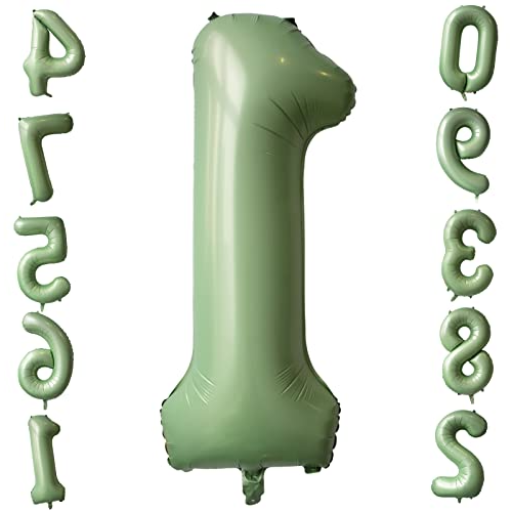
- Maintain Optimal Inflation Pressure: Keep inflation pressure at about 85-90% of the balloon’s maximum capacity. Studies show this reduces material stress and extends balloon life by up to 30%.
- Avoid Prolonged Sunlight Exposure: UV radiation in direct sunlight causes rapid deterioration in latex and other sensitive materials. Keep balloons in shaded or covered areas whenever possible.
- Use High-Quality Balloons: Investing in quality balloons increases durability. Literature states that high-quality balloons last 50% longer than standard balloons under the same conditions.
- Apply Protective Coatings: Balloon spray or gel coatings provide a protective barrier against outdoor elements. Coatings can provide up to 25% more resistance.
- Handle with Care During Setup: Rough handling, overstretching, or scraping weakens balloon surfaces. Use gentle methods and proper tools for setting up balloons.
Best Practices for Inflating Foil Balloons
Use Proper Equipment
Use a proper balloon hand pump or helium tank for inflating foil balloons. This avoids punctures or over-inflation. Research shows that adequate inflation can increase floating time by 30%.
Inflate at Recommended Size
Balloons might rupture if overinflated or lose their shape and lifespan if underinflated. Most foil balloons indicate the recommended size for inflation; adhere strictly to these guidelines.
Check for Leaks Before Inflation
Look for visible tears or pinholes before inflation. Minor defects may be repaired with tape or adhesive patches, preventing unexpected deflations.
Inflate Slowly and Evenly
Gradual inflation helps avoid stress concentration in specific areas. Uneven inflation can strain the foil and cause early damage.
Seal Properly After Inflation
If your balloon has a self-sealing valve, ensure it’s firmly sealed after inflation. For balloons without self-sealing valves, tightly tie the neck or use clips to maintain pressure, ensuring more extended display periods.
Storage Recommendations for Air-Filled Balloons
Proper storage of air-filled balloons can significantly extend their lifespan and maintain quality for future use:
Choose a Cool, Dry Environment
Store balloons in cool, dry places, free from humidity and sunlight. Heat can cause expansion leading to bursting, while extreme cold can cause cracking. Ideal temperatures range between 50°F (10°C) and 77°F (25°C).
Avoid High Humidity
High humidity degrades balloon material over time, especially latex balloons. It also causes stickiness and impairs elasticity. Use dehumidifiers or silica gel packets in storage areas to reduce moisture.
Keep Away from Sharp Objects
Place balloons in containers or bags to prevent punctures from sharp objects and rough surfaces. Clear plastic storage bins are recommended to keep them clean and visible while protecting from dust and debris.
Shelf Life Information
- Latex Balloons: Approximately 1-2 year shelf life when stored correctly. Check for color changes or deterioration before use, as latex naturally degrades with age.
- Mylar/Foil Balloons: Can remain in storage for several years with minimal damage. For extended life, fold balloons flat carefully to avoid creasing the foil.
Using Balloon Accessories to Enhance Durability
Balloon accessories significantly increase longevity and should be included in your setup:
- Balloon Clips: Clamp latex balloons tightly to maintain fullness for longer periods
- Ribbons and Weights: Keep balloons secured in place, preventing damage from movement
- Protective Weights: Essential for outdoor events to avoid balloons from being disturbed by wind
These accessories help secure balloons in place, preventing unintended deflation or damage, making event setups more reliable and long-lasting.
Common Uses for Foil Balloons

| Use Case | Description |
|---|---|
| Celebrations & Parties | Birthdays, weddings, anniversaries, holidays |
| Corporate Events | Branding with logos, slogans, or designs |
| Gift Additions | Paired with flowers, chocolates, or gifts |
| Themed Decorations | Letters, numbers, or custom shapes |
| Reusable Wrapping | Shiny gift wraps or jar covers |
| Craft Projects | Artwork, banners, or confetti |
| Christmas Decorations | Baubles, tinsel, or tree toppers |
| Photo Backdrops | Shiny backdrops for frames or events |
Creative Balloon Arrangements and Arches
Creative balloon designs and arches add classy and celebratory touches to any event. Here are five popular arrangements:
1. Classic Balloon Arch
Timeless designs using balloons of the same size and color. Perfect for ceremonies, corporate events, and birthdays. Can serve as entryways or backdrops. Neutral colors like white or pastels remain popular trends.
2. Organic Balloon Arch
Asymmetrically arranged with different balloon sizes, creating organic and modern looks. Often highlighted with complementary greenery, flowers, or fairy lights. These designs have seen a 30% increase in popularity for photo backdrops.
3. Themed Balloon Sculptures
Balloon arrangements tailored to specific themes, such as tropical, seasonal, or holiday events. Include custom elements, such as palm leaf designs, snowflakes, or metallic accents, for a personalized touch.
4. Floating Balloon Centerpieces
Helium balloons creating floating effects, tied with invisible strings. Excellent for table setups. Adding LED lights or glitter accents enhances charm, making them perfect for evening events.
5. Geometric Shapes and Frames
Balloons arranged in geometric patterns or attached to metallic/wooden frames. Creates sleek looks preferred for sophisticated parties or brand activations. Monochromatic balloon colors enhance the chic, minimalist vibe.
Letter Balloons for Personalization
Letter balloons are a highly fashionable way to add personal touches to events. Available in infinite varieties of materials, colors, and sizes, they help create cherished memories through names, messages, and milestone highlighting.
Size and Placement Guide
- 16-inch balloons: Suitable for tabletop centerpieces
- 40-inch balloons: Perfect for photobooth backgrounds or venue entrances
- Combination displays: Mix with string lights, floral displays, or garlands for enhanced attractiveness
Expert Recommendations for Letter Balloons

💡 Professional Tips
- Choose the Right Material: Foil balloons offer shine and premium appearance; latex is more flexible and affordable.
- Plan the Placement: Position in obvious areas like entry points, photo backdrops, or stage settings for maximum impact.
- Size Appropriately: Use bigger balloons for large venues, smaller ones for intimate spaces to match event scale
- Maintain Inflation: Use helium tanks or professional services to keep balloons afloat throughout the occasion.
- Combine with Other Decor: Mix letter balloons with lights, flowers, or signs fora unified looks
Top Brands for Quality Foil Balloons
| Brand | Key Features |
|---|---|
| Qualatex | High-quality, shiny, biodegradable options |
| Betallic | Durable, innovative designs, excellent sealing |
| Anagram | Unique branded designs, high-quality finish |
| Amscan | Largest party product company globally |
| HiBoony | Asia’s largest producer, vivid designs |
| CTI Balloons | Eco-friendly inks, durable, innovative |
| Gemar | Biodegradable, long-lasting, European quality |
| Tuftex | Flexible, vibrant colors, outdoor-friendly |
| Sempertex | Matte finish, extensive color options |
| Kalisan | Soft texture, metallic colors, and affordable |
Innovative Trends in Balloon Decorations
Balloon Garlands and Arches
The new interior trend of the 21st century, customizable for any theme or color scheme. Over 70% of event planners considered balloon garlands as the number one decor choice of 2023.
Eco-Friendly Balloons
Environmental consciousness has increased demand for biodegradable balloons made from natural materials like latex that decompose faster than traditional balloons. 65% of consumers now prefer environmentally sustainable balloon options.
Personalized Balloons
Custom balloons with names, messages, and images provide personal touches for both personal and corporate events. Personalized balloon sales have increased by 45% in the past two years.
LED Balloons
LED balloons are transforming night events with spectacular glows, perfect for evening parties. They enhance ambiance through magical lighting effects, with a 30% increase in favor for outdoor evening events between 2020 and 2023.
Creative Balloon Sculptures
Intricate balloon sculptures, shaped like animals, flowers, or artistic creations, are becoming the centerpieces at events. They create conversation starters and memorable sights, with growing interest in large-scale balloon sculptures for corporate and gala events.
References
-
City of Riverside – Mylar Balloons Cause Thousands of Outages Every Year: Discusses the properties and impact of Mylar (foil) balloons.
-
Florida Senate – Release of Balloons Analysis: Provides insights into the materials and longevity of foil balloons.
-
National Park Service – Airborne Trash at Saguaro National Park: Highlights the environmental impact and durability of foil balloons.
Frequently Asked Questions (FAQ)
Air-filled foil balloons typically last longer than helium-filled balloons. They can remain inflated for several days to weeks, depending on environmental conditions and the quality of the balloon. Unlike helium balloons, air-filled foil balloons don’t deflate as quickly and can be used for decorative purposes, such as arches or bouquets.
Latex balloons generally have shorter lifespans than foil balloons. While latex balloons filled with air may last 1-2 weeks, foil balloons can stay inflated for several weeks or even months. The porous nature of latex allows gas to escape more quickly, whereas the sealed surface of foil balloons helps retain air longer.
The lifespan of air-filled balloons is influenced by temperature, humidity, and exposure to direct sunlight—balloons kept in cooler, shaded areas last longer than those exposed to heat and light. Additionally, balloon size and seal quality around the valve play significant roles in maintaining inflation.
Hi-Float is designed for helium balloons, not typically used for air-filled balloons. For air-filled balloons, proper sealing and suitable environmental conditions are usually sufficient. However, using good-quality balloons significantly enhances their longevity.
To prevent foil balloons from deflating quickly, ensure they’re appropriately inflated and sealed. Avoid placing them in areas with extreme temperatures or direct sunlight, as this causes gas expansion and escape. Consider using balloons with self-sealing valves to maintain air pressure for longer.
Yes, latex balloons can often be re-inflated if undamaged, though they may not last as long with each additional inflation. Foil balloons are better suited for re-inflation since they’re less porous and maintain shape and structure more effectively after deflation.
Air-filled balloons are excellent for creating balloon arrangements like arches, bouquets, or garlands. Since they don’t float, they can be arranged creatively without needing helium. They’re ideal for indoor decorations where longevity can be maximized without floating away risks.
No, foil balloons won’t float when inflated with air. They require helium to achieve buoyancy. When using foil balloons for decoration, keep them air-filled and use them alongside helium-filled balloons for visually appealing displays.
Air-filled balloons generally last longer than helium balloons. While helium balloons may float for several hours to a few days, air-filled balloons can remain inflated for weeks. This makes air-filled balloons more practical for long-lasting decorations like balloon arches or event decor.

